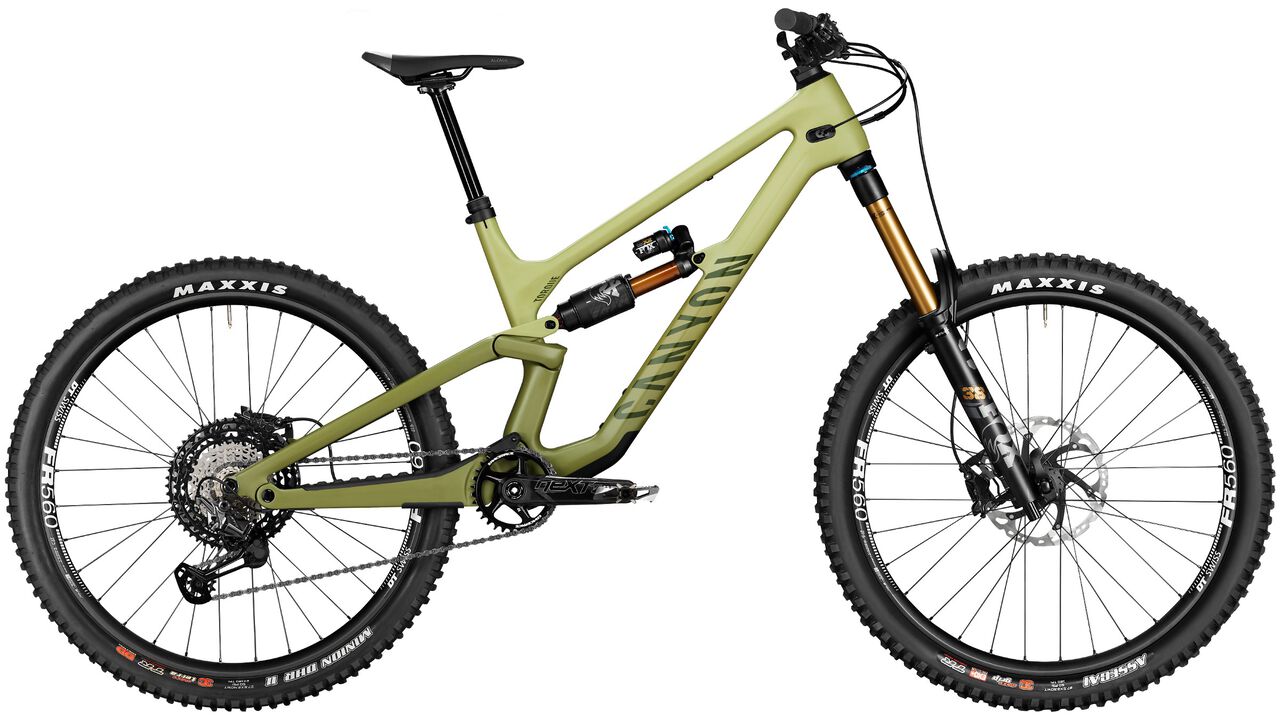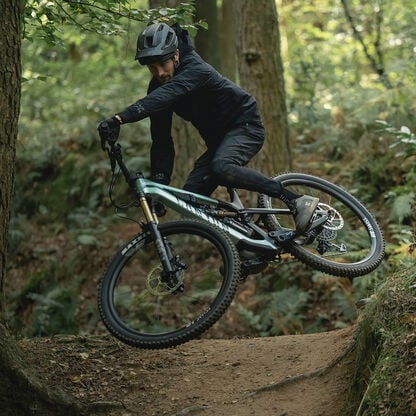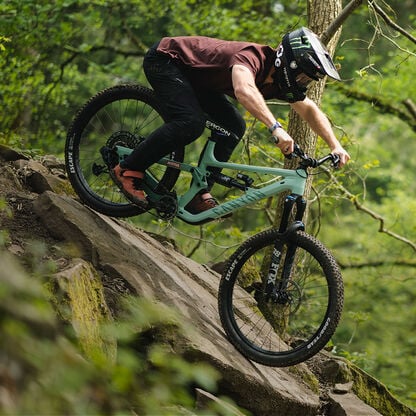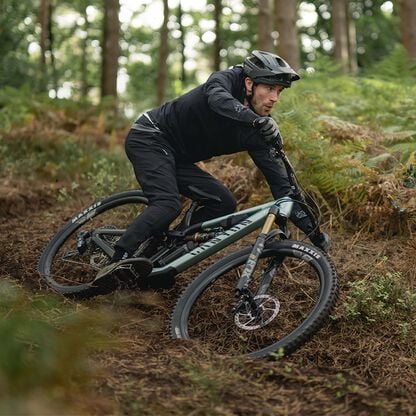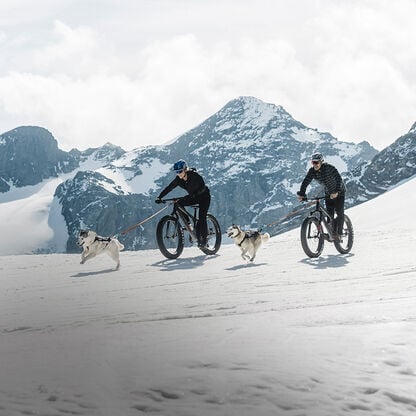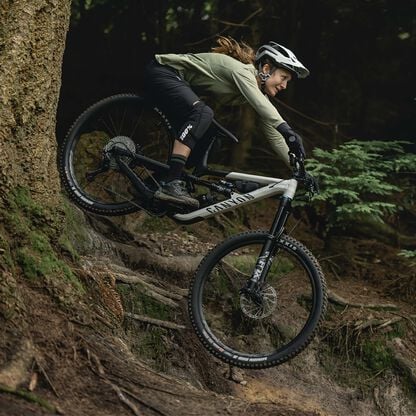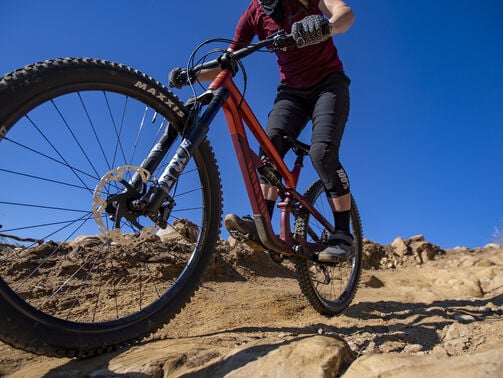Carbon or aluminium: Which is the best frame material for a mountain bike?
Carbon or aluminium mountain bike? Unpick the hype to find the right frame for you.


When you’re in the market for a new mountain bike, you will have a number of frame materials to choose from: steel, titanium, aluminum or carbon. Each material has its merits, however when it comes to the crunch, which one should you choose?
Canyon has made a name for itself in premium quality aluminum and carbon bikes. While the debate of carbon vs. aluminum road bikes is well documented and discussed, it’s less so in regard to mountain bikes.
[carbon.alloy.mtb.intro3]
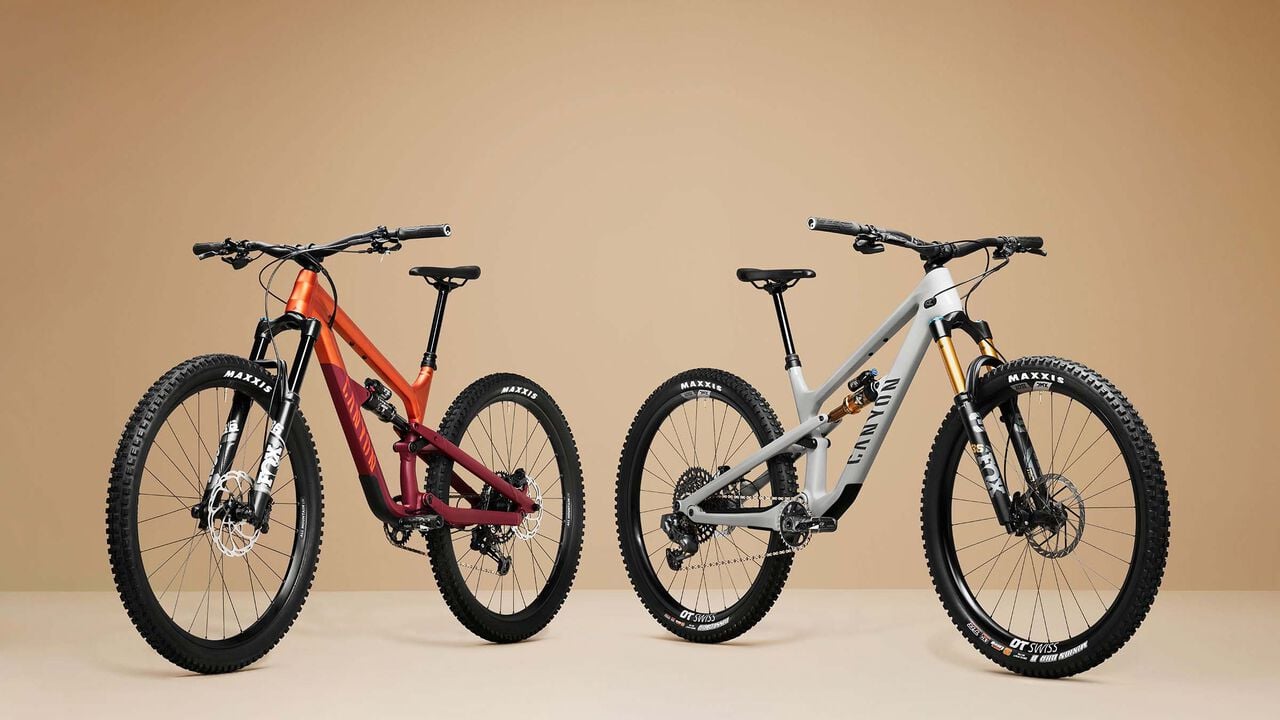
[carbon.alloy.mtb.h1]
The first purpose-built mountain bike was made from steel. The first mass-produced mountain bike was also made from steel. Many boutique mountain bike brands still produce very capable steel bikes today, and you’ll often see them around your local trail centers.
In the 1970s, aluminum came to the fore as a durable, reliable material suitable for high production volumes. Though it was initially priced at a premium, overseas production soon improved the pricing for the consumer and it became mainstream fairly quickly.
Aluminum paved the way for lightweight, nimble and affordable mountain bikes and they’re still celebrated for these characteristics today.
Early carbon fiber prototypes can be seen racing the downhill circuit as early as the 1990s. Carbon mountain bikes became popular at the start of the 21st century. It has the highest strength to weight ratio and has unparalleled levels of stiffness compared to other materials. Carbon is manufactured by laying up sheets of fabric into a mould. This means it’s possible to fully optimize and customize the frame shape beyond the typical circular tubes on metal bikes.
[carbon.alloy.mtb.p1.5]
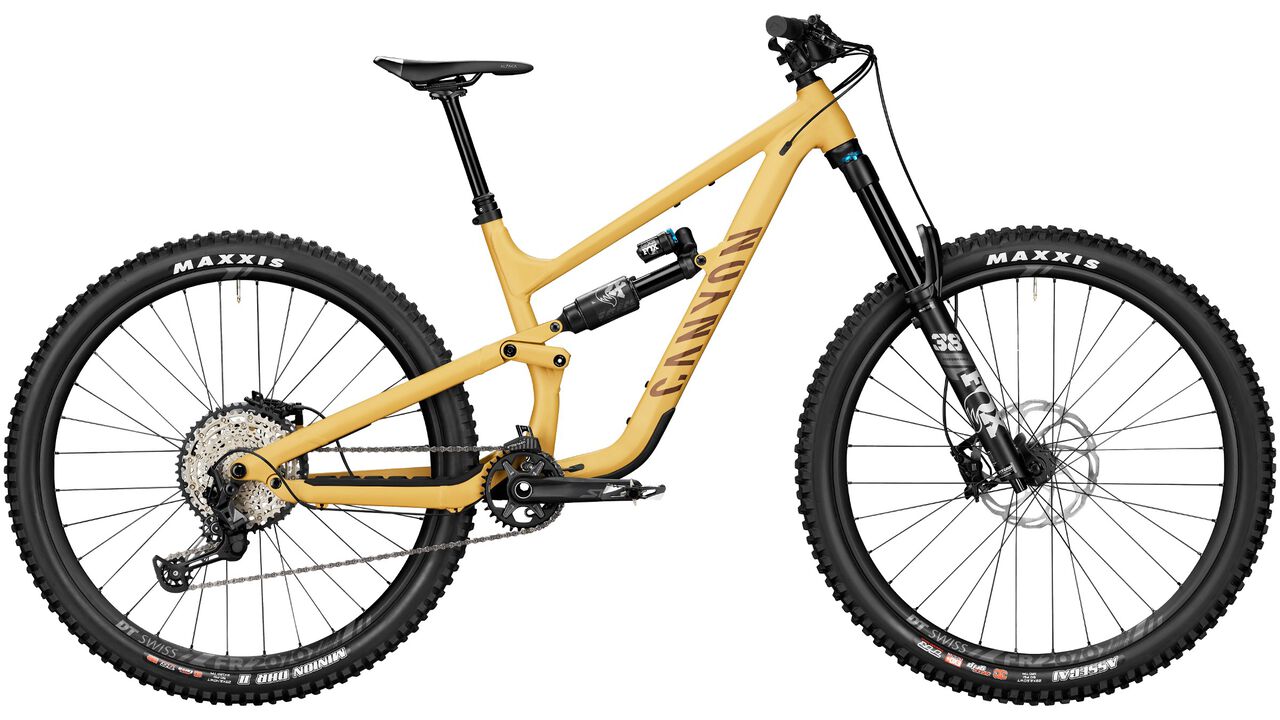
[carbon.alloy.mtb.heading]
Pros of aluminum mountain bikes
The primary reasons for getting an aluminum mountain bike are:
-
[carbon.alloy.mtb.bullet2.1a]
-
[carbon.alloy.mtb.bullet2.1b]
-
[carbon.alloy.mtb.bullet2.1c]
Aluminum mountain bikes are an ideal choice for riders who want a no-frills riding experience. They have all the features you’d ever want and nothing you don’t necessarily need. While the design of the same bike looks very different to the equivalent carbon fiber mountain bike, the ride will still be just as fun.
We asked our Product Development Engineer Lorenz Lay why he chooses aluminum for his mountain bikes. “Aluminum means you’re getting a simplified ride, fewer adjustments and therefore less to worry about,” he says. “If you just want a good, care-free time in the woods and don’t feel the need for fancy added extras, go for AL every day.”
Aluminum is a very affordable material nowadays. If you’re on a budget or just starting out in the sport, aluminum-framed mountain bikes are often very wallet-friendly. The balance of strength, stiffness and weight alongside price makes aluminum bikes very desirable. Canyon takes the time to make sure its AL frames go the distance. With neat solutions such as steel threads at each pivot point, you can repair any mechanical mishaps easily.
Aluminum mountain bikes
Explore all the AL MTBs here: Spectral, STCHD, Grand Canyon and many more!
View all[carbon.alloy.mtb.h3]
The two major reasons for choosing carbon fiber are:
-
[carbon.alloy.mtb.bullet3.1a]
-
[carbon.alloy.mtb.bullet3.1b]
Carbon fiber is a very popular material for mountain bikes due to its strength, stiffness and weight. While it’s easier to fine tune the stiffness of a carbon mountain bike, our aluminum bikes are engineered for the exact same ride experience.
Carbon fiber mountain bikes have a seamless design, which can be esthetically pleasing to some riders. The absence of welds gives a smooth and clean look to the bike. Carbon MTBs challenge what’s possible when it comes to the perfect ride quality at a minimal weight, all while retaining trail-proof strength.





Which Canyon MTBs are available in both aluminum and carbon?
We want to make performance bikes accessible to everyone regardless of budget. That’s why we’ve launched our Spectral, Spectral 125 and Torque models in both aluminum and carbon.
Both of our Spectral models are available with a robust aluminum frame or a lightweight carbon fiber frame. The choice is yours when it comes to this poppy and playful range of trail mountain bikes. “The Spectral AL is 400-500 grams heavier than the CF version but that isn’t always a bad thing,” says Lorenz. Weight is only half the story when it comes to the riding experience on the trail. Stiffness geometry and kinematics play a role in how a bike rides and how it climbs uphill. The team of engineers and product developers have worked hard to ensure our AL bikes match the performance of the CF as close as possible.
Finally, the Canyon Torque is a force to be reckoned with no matter which frame material you choose. Get big thrills for fewer bills on the AL models or take your shred to the next level on our carbon fiber frames.
[carbon.alloy.mtb.h5]
If you’re on a budget and want the best bang for buck, an aluminum frame will pack in a lot of fun. What you save on the cost of the bike itself, you can spend on some flash new mountain bike kit and accessories for your new ride.
[carbon.alloy.mtb.p5.2]
Is carbon always better?
Rene Birkenfeld is one of our Development Engineers who works with carbon every day. In short, he says carbon isn’t always better. “If the part isn’t manufactured perfectly, fibre undulation occurs in the laminate, which can compromise the bike part,” explains Rene. Canyon invests a lot into quality control including a CT scanner to ensure faults are kept to an absolute minimum.
“It’s also much more complex to design, manufacture and get the best out of carbon parts. The costs and timings sometimes outweigh the benefits,” adds Rene. “We’re also mindful of the CO2 footprint of carbon, so we’re researching other materials and manufacturing methods all the time.”
Which carbon bikes parts are worth it?
Having worked with in manufacturing and quality control for over 14 years, Rene is passionate about finding the limits of materials. In his opinion, it’s worthwhile having a frame, fork, seat post and rims made from carbon as the benefits speak for themselves.
The stem, saddle rails, derailleur hangers, chainrings, cassettes and any kind of frame protection offer minimal benefits for the high cost outlay. Even then, quality is likely to be substandard compared to other materials.
Is it worth upgrading to carbon?
This is a question most people can only answer themselves. Rene has been around long enough to answer this question objectively.
- Budget: consider how much money you’re spending on a hobby. If you’re racing, it’s a little different as you need a competitive edge.
- Looks: personal preference on the aesthetics of a carbon frame versus aluminium or steel.
- Maintenance: can you afford to maintain carbon parts? Do you have the experience to do so?
“At the end of the day, it’s not about your bike’s material. It’s about the fun you can have.”
Discover our Mountain Bikes
Did this article help?
Thank you for your feedback
-
 About the author
About the authorMatt Wragg
Get to know Matt Wragg, the freelance photographer, writer, and self-proclaimed bicycle-breaker based in Nice, France. Despite unsuccessful attempts at XC, trials, 4X, and DH racing, Matt's passion for mountain biking never waned. After a stint in communications consulting, he decided to pursue his love for cycling and moved to New Zealand. Since then, he has traveled the world, chasing trails and building a successful career as a cycling photographer and writer. In 2021, he was diagnosed as autistic and has been coming to terms with it. His bike cellar is a true testament to his love for cycling, housing bikes that range from freeride to cargo.
